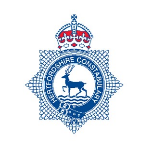
|
||
|
|
||
|
||
|
A-Z of Crime Prevention: STOP AND SEARCH |
||
|
Good evening Resident, I hope you are well. I can only apologise for the delay in disseminating this week’s A-Z of Crime Prevention letter. Next week’s newsletter will resume on Monday 19th May at 4pm! This week, I will be giving an overview of Stop and Search, explaining how and why it is used, and offering the opportunity for recipients of this message to ask questions. We are aware of the controversy that comes with Stop and Search due to figures revealing a disproportionate use against ethnic minorities and we welcome an open conversation about this topic to dispel myths, offer advice and support, and remain accountable for the use of these powers. Firstly, I think it’s important to cover the legal framework for Stop and Search. There are multiple pieces of legislation which allow for a person or a vehicle to be stopped and searched. The most commonly utilised powers are Section 1 of the Police and Criminal Evidence Act which provides Police Officers with the power to search a person in a public place for stolen or prohibited articles, bladed articles, offensive weapons, fireworks, and articles which could be used to steal or cause criminal damage. Section 23 of the Misuse of Drugs Act allows a Police Officer to search a person or vehicle where there is a suspicion that they are in possession of a controlled drug. This power can be used in public or private places. Section 36 of the Psychoactive Substances Act creates a power to stop and detain a person for the purposes of a search where a Police Officer has reasonable grounds to suspect that a person has committed or is likely to commit any offence under the Act (eg. production, supply, possession with intent to supply a Psychoactive Substance like Nitrous Oxide). To utilise these powers, officers must have ‘reasonable grounds for suspicion’. To ensure everyone is treated fairly, irrespective of personal factors or protected characteristics, the officer must suspect that they will find the item searched for and it must be objectively reasonable to suspect this, given the information available to us. Grounds may include receiving a description of an offender from a member of the public, witness, or CCTV operator; observing suspicious behaviour (for example, a person concealing their identity, avoiding eye contact, making off from Police); intelligence on locations as hotspots for crime or on vehicles of interest. Every stop and search is recorded with a detailed explanation as to why the search was executed along with the result of the search. For more information on Stop and Search powers, please visit: Stop and search | Hertfordshire Constabulary. It is important to understand the impact stop and search has on communities and individuals. At Hertfordshire Constabulary, we do this through community engagement, scrutiny and community accountability. We welcome the independent stop and search scrutiny panels which take place regularly and involve volunteers reviewing and scrutinising our use of stop and search by carrying out random dip-samples of documentation and body worn video. Any feedback, either positive or negative, is fed back into our organisation so we can listen to your views and shape our organisation accordingly. If you are interested in reviewing our stop and search data, you can visit: Stop and search | Police.uk. This was a brief overview of Stop and Search and its use in Hertfordshire, but if you still have questions or thoughts on the issue, please hit “Reply” at the bottom of this message to raise this to us directly. Thank you for reading (and for your patience in waiting for the 19th newsletter). All the best, PC Fiona Hitchcock | ||
Reply to this message | ||
|
|



